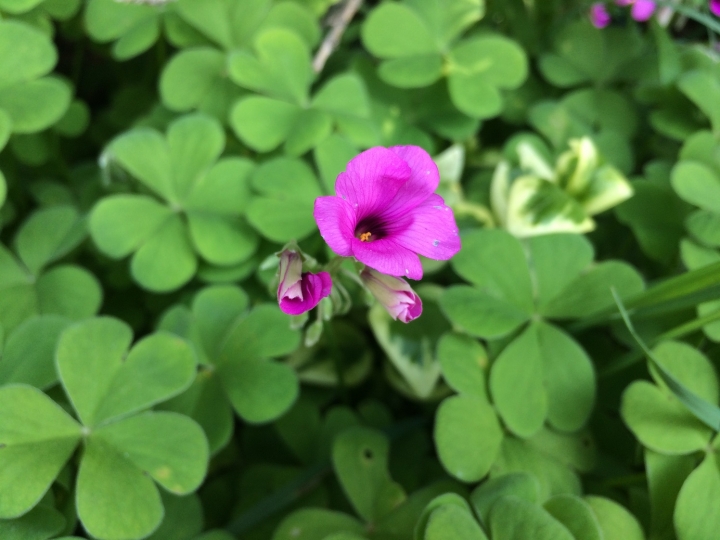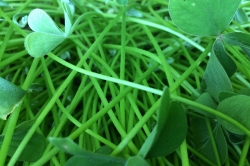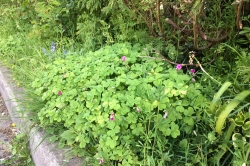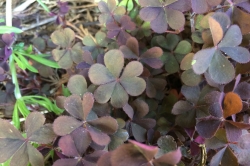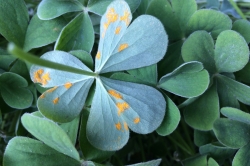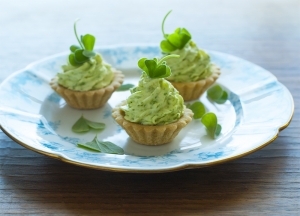Your basket is currently empty!
Home / Hedgerow Guide /
Pink-Sorrel
Pink-Sorrel
Pink flowered Sorrels are relatives of our native Wood-sorrel that pack the same refreshing sour taste. They’re native from South America but naturalised after being widely introduced as garden plants.
| Hedgerow Type | |
| Common Names | Sourgrass |
| Scientific Name | Oxalis articulata |
| Season Start | Jan |
| Season End | Dec |
Leaves
Like Wood-sorrel but larger and hair-covered.
Each leaf has three heart shaped leaflets. The leaflets ‘wilt’ or close at night or if conditions are harsh.
Flowers
Pink to purple delicate flowers with five petals. Initially the petals are rolled up in a cone shape showing the whitish underside. The flowers grow in umbels with several flowers.
Habitat
Found in gardens, flower beds and open ground.
A native from South America introduced as a garden plant and now naturalised.
Possible Confusion
Other pink flowered Oxalis species in Britain include Garden Pink-sorrel (Oxalis latifolia), Pale Pink-sorrel (Oxalis incarnata) and Large-flowered Pink-sorrel (Oxalis debilis) – these are all too similar and unnecessary to distinguish as all green leaved Oxalis are edible.
Our native Wood-sorrel is a more delicate plant with white flowers that grows in woodland.
Procumbent Yellow-sorrel, Oxalis corniculata, with purple leaves (see photo on the left) is a frequent weed in urban habitat but said to hyper-accumulate copper and perhaps better avoided.
Wood-sorrels could be confused with Clover but clovers don’t have heart shaped leaves and grow in grass, and are edible in small amounts.
Taste
Sharp and sour something like apple peel and lemon, very pleasant when thirsty.
Frequency
Common in the Southern counties, especially around London, scattered elsewhere.
Collecting
The leaves, stem and flowers are edible.
It contains oxalic acid which can inhibit calcium absorption so it should be avoided in large quantities.
Medicinal Uses
Oxalis plants contain Vitamin C.
Other Facts
All members of the Oxalis family contain oxalic acid and should not be eaten in large quantities but to put it in perspective, there is oxalic acid in chocolate, coffee, pulses, spinach, rhubarb and many other foods and they don’t come with a warning.
Poisoning would require consumption of large quantities and is a remote chance but those with kidney stones or rheumatism should be careful to add these plants to their diet. It is also said that cooking partially destroys oxalic acid.
Sorrel Rust (pictured left) is a rust fungus that affects only the exotic garden varieties of Oxalis. It appears on the underside of the leaves as an orange mold and its scientific name is Puccinia oxalidis.



 (21 votes, average: 3.71 out of 5)
(21 votes, average: 3.71 out of 5)